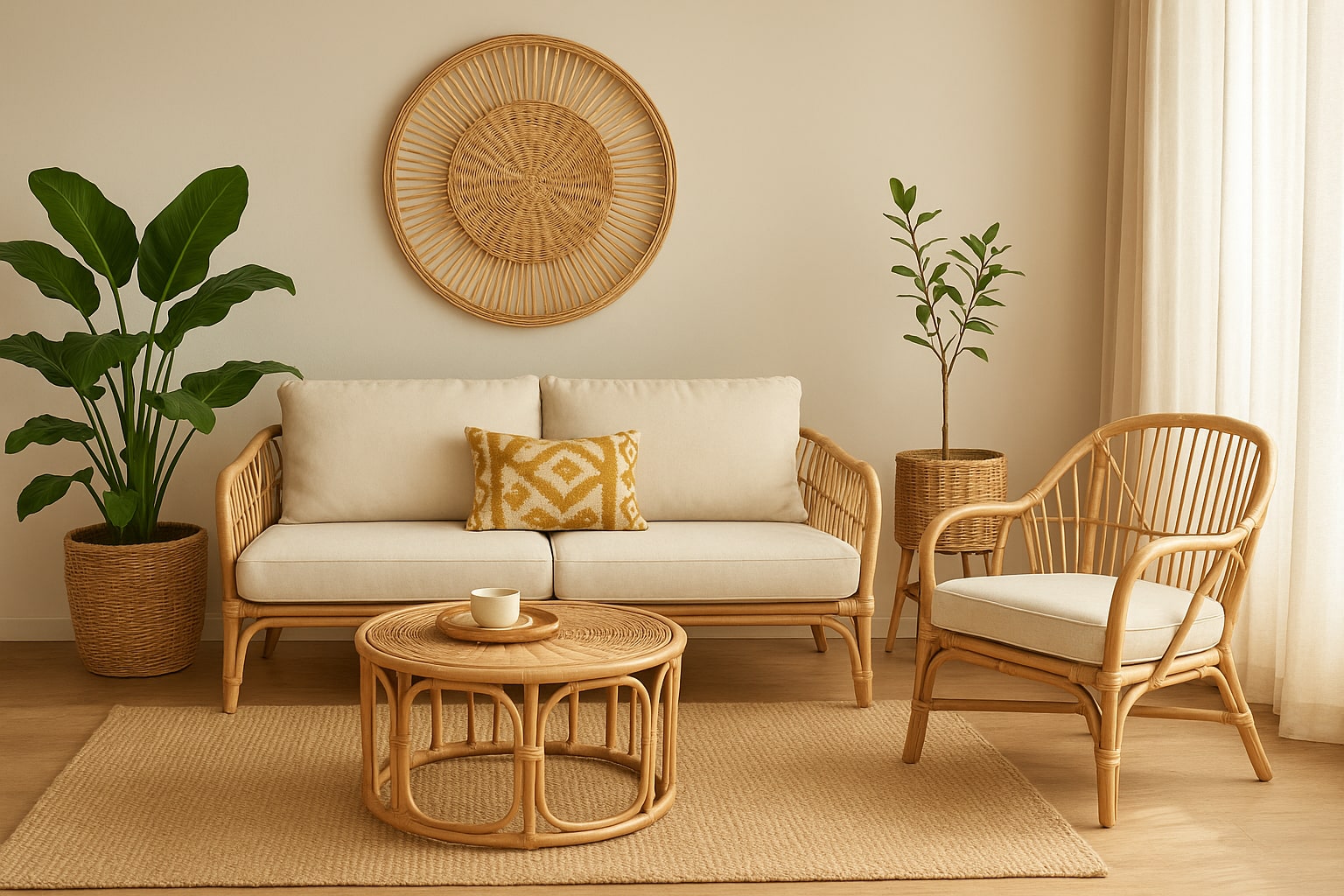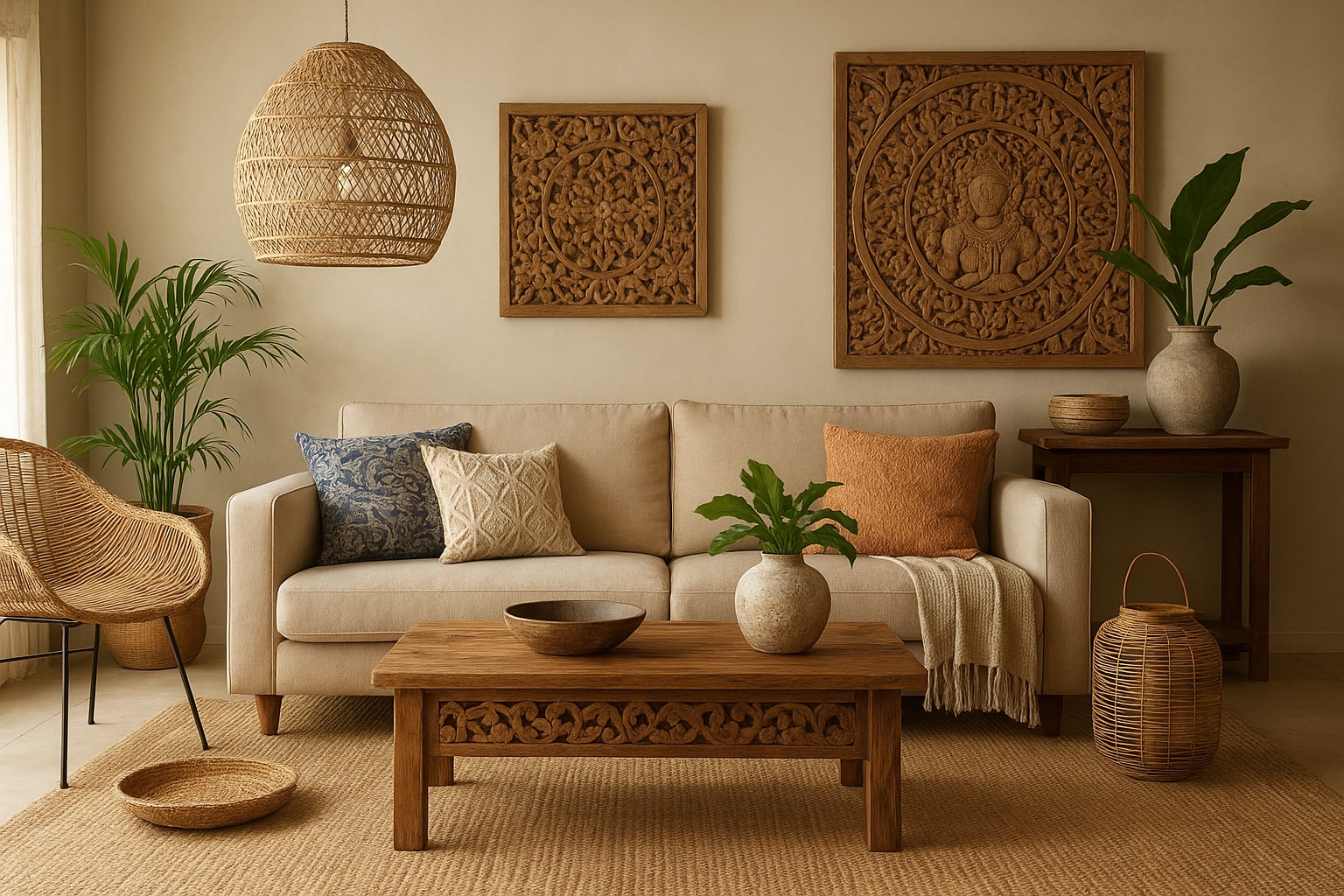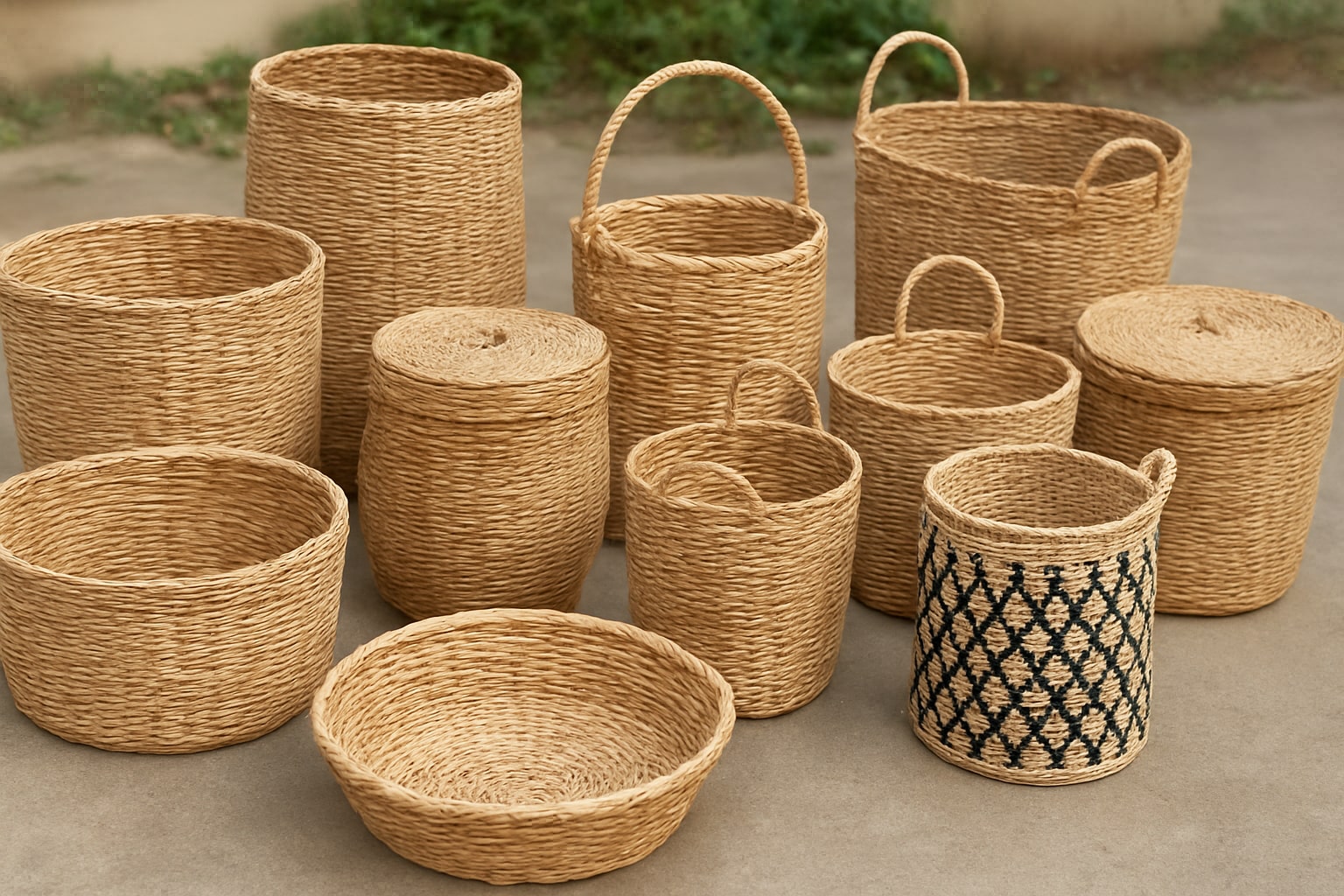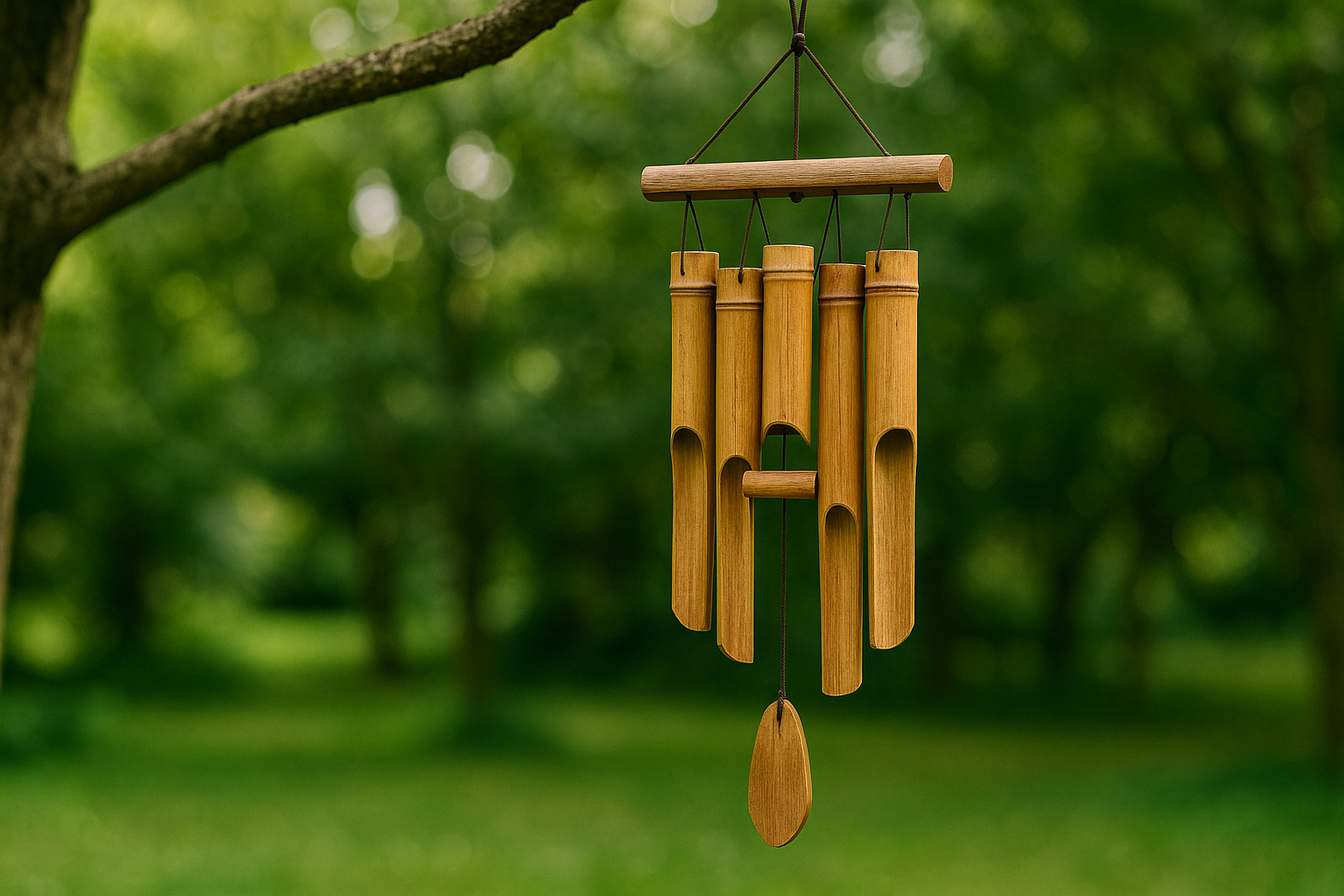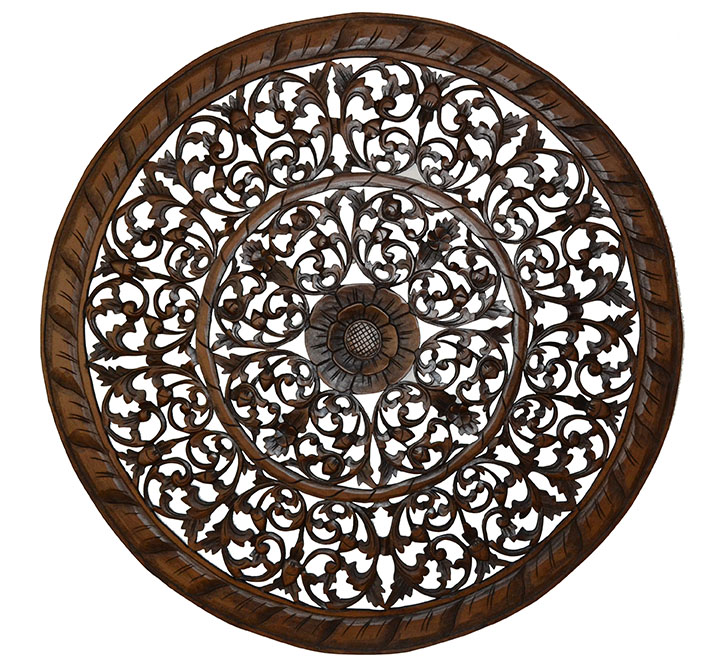If you’ve been daydreaming about bringing that tropical, laid-back Bali vibe into your home, let me tell you—handmade Bali rattan furniture is where it’s at. I first came across it while helping a friend style their villa in Canggu, and honestly, once you see how versatile and timeless rattan pieces are, it’s hard to look at your old IKEA shelf the same way. Rattan just feels alive. It carries that warm energy of Bali craftsmanship, and every piece has a little soul baked into it.
I’ve seen so many folks—especially homeowners in their 30s, 40s, and even retirees—fall in love with it not just because it looks gorgeous, but also because it’s practical, sustainable, and seriously long-lasting if you know how to care for it. Let’s dig into everything you’d want to know, from what it is, where it comes from, how to use it in your space, and what to watch out for when buying.
Read also: Bali Baskets Wholesale
What Exactly Is Handmade Bali Rattan Furniture?
Rattan is a type of climbing palm that grows like crazy across Southeast Asia, especially Indonesia. The cool part? It’s flexible when harvested but rock-solid once it’s dried and shaped, which makes it perfect for weaving furniture that doesn’t just look good but actually lasts.
The “handmade” part is what sets Bali apart from mass-produced stuff. Balinese artisans have been weaving rattan for generations, and it shows. You’ll notice smoother curves, tighter weaves, and often small details that mass-market pieces skip over—like hand-carved armrests or natural variations in tone that make each chair or table unique.
According to the Indonesian Ministry of Trade, Indonesia supplies more than 70% of the world’s rattan exports, with Bali being one of the creative hubs where traditional design meets modern style. That’s not just trivia—it means when you buy a piece, you’re literally tapping into one of the world’s richest traditions of natural furniture-making.
Why People Love Bali Rattan Furniture (And Why It’s Not Going Out of Style)
I get asked this all the time: “Isn’t rattan just another trend like shabby chic?” Nope. Rattan has been in use for centuries. Your grandma probably had some version of a rattan rocker or side table, but the Bali style feels fresher. It’s because the designs there combine traditional weaving with modern minimalism.
There’s also a practical side to it. Rattan is:
- Lightweight but durable (you can move a chair around without breaking your back).
- Naturally resistant to humidity, which is perfect if you live near the coast.
- Eco-friendly, since it regenerates way faster than hardwood.
For families, it’s a no-brainer. I know a couple who replaced their clunky dining set with a Bali rattan one, and their kids now actually sit longer at the table just because it feels more casual and comfy. That kind of says it all.
Different Types of Handmade Bali Rattan Furniture
Rattan Chairs That Steal the Show
The first piece most people go for is a chair. Whether it’s a curved lounge chair with that boho flair, or a classic dining chair, Bali rattan seating works indoors and outdoors. I have a favorite armchair from Seminyak that’s been sitting on my porch for five years now, and it still looks as solid as day one.
Rattan Sofas and Daybeds
Daybeds are a Bali specialty. They’re not just for sleeping but for lounging, napping, or sipping coffee while scrolling through your phone. Add a couple of bright ikat cushions, and suddenly your living room feels like a villa in Ubud.
Rattan Dining Sets
This is where things get exciting for bigger families. A dining table with a rattan base topped with glass or wood feels tropical but still elegant. I’ve seen folks pair them with upholstered chairs, mixing textures for a less predictable look.
Storage and Shelving
Don’t overlook baskets, cabinets, and shelves. Handmade Bali rattan baskets are my go-to for organizing. I literally have one for shoes, another for throws, and even one in the bathroom for towels. They make clutter look chic.
Decorative Pieces
Beyond the big items, there are mirrors, pendant lamps, trays, and even woven headboards. It’s these smaller touches that pull a room together. A rattan mirror in an entryway makes guests instantly feel that tropical welcome.
Styling Handmade Bali Rattan Furniture in Your Home
The biggest mistake I see people make is going full rattan-everything. Don’t. You’ll end up feeling like you live in a tiki bar. Instead, balance is the key.
For example, pair a rattan sofa with a solid oak coffee table. Or throw in modern lighting above a rustic rattan dining set. Think mix-and-match, not matchy-matchy.
One of my clients in Uluwatu had this massive open-plan living area. We combined a rattan sectional with neutral linen curtains, a reclaimed teak dining table, and modern pendant lights. The result? Villa vibes, but with a touch of elegance so it didn’t feel like a vacation rental.
Keep colors earthy—whites, creams, muted greens. Then, add pops of Bali textiles like ikat or batik in cushions or throws. It keeps the look grounded but lively.
Buying Handmade Bali Rattan Furniture – What to Watch Out For
Okay, let’s get real. Not every rattan piece labeled “handmade” is actually what it says. There’s a lot of mass-produced knockoffs floating around, especially online.
When buying, check for:
- Tight weaves: If you can see gaps or loose ends, it won’t last long.
- Frame material: Some cheap versions use plywood inside instead of solid rattan or bamboo.
- Finish: Authentic Bali pieces usually use natural finishes, not shiny synthetic varnishes.
- Smell: Weird, I know, but genuine rattan smells earthy, not like chemicals.
And yes, it’s worth asking the seller about the source. Many shops in Bali (like in Ubud or Canggu) actually work directly with artisans. If you’re buying abroad, stick with stores that can prove fair-trade sourcing.
Caring for Bali Rattan Furniture So It Lasts
I’ve seen folks ruin gorgeous rattan chairs by leaving them out in the rain. Don’t do that. Rattan isn’t waterproof, it’s water-resistant. Big difference.
Here’s what I’ve learned:
- Keep it under a covered patio if outside.
- Wipe it down with a damp cloth, but don’t soak it.
- Every few months, rub a little linseed oil or lemon oil to keep it from drying out.
- If you spot mildew, vinegar and water usually does the trick.
One little hack: I keep old toothbrushes around just for rattan. They’re perfect for cleaning dust out of those tight weaves.
Where to Shop Handmade Bali Rattan Furniture
If you’re in Bali, you’re spoiled for choice. Ubud has tons of small artisan shops, while Seminyak and Canggu lean toward more modern designs. Sukawati Market is chaotic but an absolute goldmine if you know how to haggle.
Outside of Bali, many online shops ship worldwide. Just be ready for shipping costs—they can be hefty since rattan furniture, while light, takes up space. Some folks I know actually fill a container when renovating their home, because buying in bulk saves money in the long run.
Why Handmade Beats Mass-Produced
Honestly, once you’ve sat on a handmade chair, you’ll get it. The craftsmanship is different. You won’t see uneven weaves or weak joints. Each piece feels like it was made with pride, not just pushed down an assembly line.
And there’s the cultural part. Balinese artisans often learn from their parents or grandparents. Buying handmade keeps that tradition alive and supports families directly. For me, that matters just as much as the furniture itself.
The Future of Bali Rattan Furniture
Here’s the fun part: it’s not slowing down. With the rise of eco-conscious design and people wanting more sustainable homes, rattan is becoming even more popular. I’ve noticed more designers in Europe and the US pulling inspiration from Bali collections.
There’s even experimentation with mixed materials now—like rattan combined with iron legs or marble tops. It’s a cool blend of rustic and modern, perfect for folks who don’t want to go full boho.
And let’s be honest, with people working from home more, everyone wants their house to feel like a place they actually enjoy being in. Bali rattan furniture brings in that relaxed vibe without feeling sloppy.
The Craftsmanship Behind Handmade Bali Rattan Furniture
One of the things that blows me away every time I visit Bali is how much patience and skill goes into making a single piece of rattan furniture. It’s not like they just cut some sticks and nail them together. Nope, there’s a whole process.
Artisans start by harvesting the rattan, which can grow up to 200 meters long in the wild. They strip it, dry it in the sun for days, and then bend it over heat to shape the frame. The weaving part is where the magic happens. I’ve sat with a family in Gianyar who’ve been weaving for three generations, and the way their fingers move is like watching a dance. Every little twist and tuck matters, because if you pull too tight, it snaps; too loose, and the whole structure is weak.
This is why handmade Bali rattan furniture feels different from factory-made stuff. In a factory, it’s often machine-pressed and rushed out. But when a person spends hours—sometimes days—on one chair or basket, you feel that care in the final product.
How Handmade Bali Rattan Furniture Fits Different Lifestyles
You might think rattan is only for those boho Instagram homes, but honestly, I’ve seen it work in so many different spaces.
For city apartments, a single rattan chair with a cozy cushion can break up all the industrial steel and concrete. It softens the vibe. A friend in Jakarta has one in her tiny balcony garden, and it basically transformed the space into her “mini vacation corner.”
For family homes, rattan dining sets are a winner. They’re sturdy, light enough to move when you’re hosting guests, and they don’t scream “formal.” It makes dinners feel more relaxed.
And for retirees or older homeowners? Rattan is easy to handle. My aunt in Perth replaced her heavy oak chairs with Bali rattan ones, and she loves that she can move them around without asking for help. Plus, they don’t go out of style, so it’s not like you’ll regret the investment in a few years.
The Investment Value of Handmade Bali Rattan Furniture
Now, let’s talk money. Some folks balk when they see a handmade rattan sofa priced higher than a mass-market one. But here’s the thing—good rattan lasts. You’re not just buying something pretty, you’re buying something that can stay in your home for 10, 15, even 20 years with the right care.
And the resale value? Surprisingly strong. There’s a whole market for vintage rattan, especially Bali-style pieces. I know someone who sold their old rattan peacock chair (yes, the big throne-like one) for more than they originally paid for it. So in a way, it’s not just decor—it’s a little asset.


